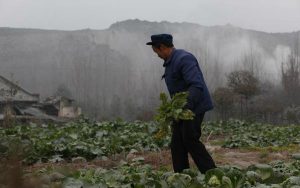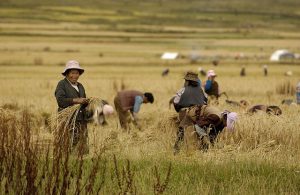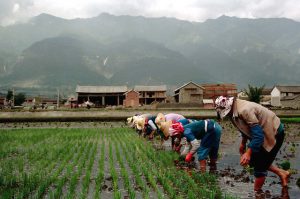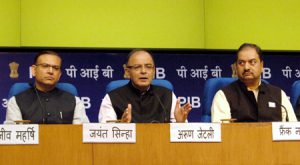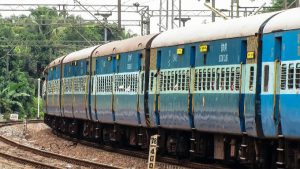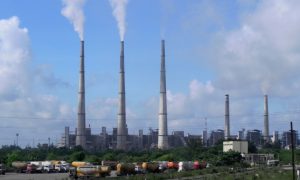While the major cities of China have been attracting the world’s headlines, it is likely that its vast and often neglected countryside will play a key role in the next phase of its economic development.
Although China is the world’s third largest country in terms of terrain, the actual amount of land suitable for agriculture is small, estimated at a mere 7% of the total. On average, each farmer has only 1,900 square metres of land, about half an acre. The vast majority of farmers suffer from low income, low social status and endure a hard life.
Increasingly, China is facing a shortage of labour in its countryside. While the cities attract rural labour, large tracts of agricultural land are left unused or are farmed inefficiently. Outdated methods of farming also mean greater use of fertiliser and other compounds that harm the environment, waste precious water resources and lead to soil erosion.
China’s agricultural industry lacks competitiveness and lags behind in the application of technology. At the same time, precious farmland is lost to construction. All these factors have become serious threats to rural development and to farming as an industry, and pose risks for the nation’s food security. Understanding these issues and finding a sustainable way forward have become an urgent matter for the government.
We look at two examples – one near Shanghai, the other in the southwestern province of Guizhou – to study the rural land issue and to point to realistic solutions that suit China’s society and political system.
Rural skills gap
As the economy develops, a growing mismatch between China’s traditional small rural modes of production and its huge urban markets has emerged. As a result of poor education in rural China, 70% of people working on the land have only received a primary or middle school education. In recent years, those who are better educated – usually the young or people of prime working age – have moved to the cities.
Following this brain drain, farmers now tend to have a lower ability to adopt modern techniques. In response, local governments have rolled out various training programmes. While these have been fruitful, the technical levels achieved are still below the needs of rural development. As the old ways of farming can no longer raise rural incomes, a new way to solve the problem is needed that will introduce investment and technology and build a modern development model with economies of scale.
Land ownership
Article 10 of the Chinese constitution says that land in the cities is owned by the state, while land in rural and suburban areas is owned by collectives, except for those parts designated by law to the state. Under the system of collective ownership, farmers have the right to lease land for a limited term and to manage it. Since the establishment of the People’s Republic in 1949, there have been numerous land reforms, but one element does not change – farmers never own the land.
The law covering the system of collective ownership for farmland now needs further improvement, providing for the protection of rights and the monitoring of how these rights are exercised. As regards the transfer or circulation of land, there is a need to clarify the law in relation to rights, responsibilities and benefits. The rights of ownership, contracting, sub-contracting, man agement and usage need to be defined. The right to manage independently of the collective should be reinforced.
China is an enormous country with great economic, cultural and geographical differences between east and west. Hence, a one- size-fits-all policy or simply copying good practice does not work. The only way to succeed is a tailored approach focusing on the interests of the region and its farmers. The countryside on the eastern coast tends to be low and flat, with a high population density, albeit with limited labour available for agriculture.
Thus it is suitable for family farming. The west is generally more mountainous, sometimes densely forested, with its overall population is low and its economy backward. Thus it is suitable for large-scale collective developments. Currently, the countryside is still thought of as ‘the farmers’ little economy’, lacking the ambition seen in industrial development. Generations of ‘little’ farmers have led to limited cultivation without the prospect of development at scale. A new approach is needed to change the way of thinking, starting with better education.
New look communes
The family farming model suits the south-eastern region with its developed economy, dense population and limited land.
Songjiang district of Shanghai is an example. Lying in the highly developed Yangtze delta zone, Songjiang is only 40 kilometres from the centre of Shanghai. The agricultural population is under 10%of the workforce because many workers have moved into industries. But proximity to a major city ensures a ready market for produce. In the past, overuse of both land and chemical fertilisers has exhausted the soil.
To correct this, the local government has since 2008 provided experimental support for combined farming – crops and livestock – by funding small-scale pig farms. The collective commune, a body recognised by the government, buys the livestock, relieving farmers of price risk. To encourage circulation of land management rights, the local government has been offering annual compensation, equivalent to the value of 3,750 kilograms of grains per 10,000 square metres, to people who give up their rights to use the land.
As the average land farmed per house-hold is 3,300 square metres, the annual net income from this arrangement has amounted to no more than 500 yuan (about £50) – not enough to tempt those who are capable of farming themselves. Those who are not capable, perhaps because they have left for jobs in the city or retired, take the compensation.
The Songjiang government also provides professional training for farmers, as well as quality seeds, pest control and machinery. Songjiang has already established 30 collaborative machinery associations, equipping families with full mechanisation for rice production. In the west, population density is low and large-scale industrialisation of agriculture is desirable.
Experiments in land rentals
In Guizhou province's Yuqing county, farmers can manage the circulation of their land management rights directly. This has formed the basis for large and well-funded commercial organisations to take the lead in agricultural management. They pay rent to the farmers according to the size of the land, turning small-scale farming into agribusiness. The production chain is integrated from planting to harvesting, to quality control and marketing.
There are also other schemes. For example, the local village of Songyan in Yuqing County applied for state funding for infrastructure and improvements at a cost of almost 100 million yuan. Roads have been built and irrigation introduced. A 1.5% top slice from local taxation is taken for continuing improvements. Yuqing County has meanwhile combined agriculture with rural tourism, marketing itself under the slogan: ‘Water and mountains – One ancient city’, with tourists staying at farmers' homes.
Private land owership unsuitable for China
The fundamental issue in the development of the Chinese countryside is land. The models followed by the Songjiang and Yuqing look quite different. Yet the land issue in both places has been handled by the local governments within the legal framework. A foreigner can legitimately ask: "Why cannot China allow private ownership of land, which would give farmers the right to maximise the utility of land through buying, selling or mortgaging?" This is a complex issue. More than two thousand years of feudal society in China has shown that private land ownership did not enrich farmers.
On the contrary, many lost land or sold it cheaply, leading to a small minority of land-owners who became rich. Society was polarised between rich and poor, causing unrest. In modern China, if there were private ownership, farmers could lose land due to poor farming or natural disasters and be deprived of a living.
This could cause problems the government might not be willing to risk or farmers to accept. Under current circumstances, private land ownership is unsuitable and unrealistic for China. However, the desire for better use of farmland, more efficient circulation of contracts and industrialisation of agriculture is unstoppable.
A longer version of this article was originally published in The World Today, Chatham House's bi-monthly magazine.
